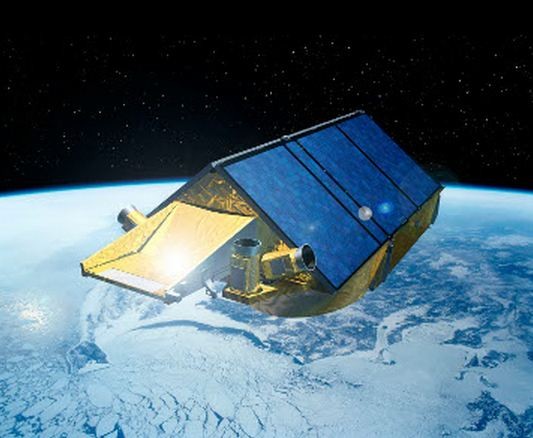The European Space Agency (ESA) has detected an increase in sea ice volume in Canada's Arctic territories but this isn't exactly the good news it appears to be.
The increased volume was detected despite the lowest winter extent recorded in Canada, said ESA, which has just released the results of its five-year Explorer CryoSat mission.
Explorer CryoSat monitors variations in the extent and thickness of polar ice through data gathered by the CryoSat-2 satellite in low Earth orbit. The information about the behavior of coastal glaciers that drain thinning ice sheets will be vital to better predictions of future sea level rise.
ESA data shows the Arctic floes monitored in the north have become thicker by an average of 9.8 inches, or 17 percent, compared to the thinnest winter ice ESA detected in the region in 2013. Imaging from CryoSat-2 showed a large portion of the Beaufort Sea covered in ice compared to its being practically ice free eight years ago.
On the other hand, the Centre for Polar Observation and Modelling (CPOM) in the United Kingdom said they've discovered the thickness of the sea ice around Norway's Svalbard Archipelago has decreased. It's now half of what it was initially measured during the winter of 2011 after CryoSat-2 was launched in 2010.
The CryoSat scientific team said despite data revealing the Arctic sea ice is thicker, the long term average still points to there being less ice in the future since data has been inconsistent over the years. They said the important number is not how thick the ice is, but how much volume of Arctic sea ice exists. This number shows how the ice is affected by climate change.
The recent measurements by CryoSat-2 show a two dimensional view of the Arctic. The mission of Cryosat-2, however, is to capture the 3D aspect of sea ice by measuring its thickness and detecting the height of the ice exposed above the Arctic Ocean. Combining these two datasets allow scientists to compute for changes in sea ice volume.
The latest measurements taken in February 2015 show an average thickness in the Arctic sea ice of some two meters, which means there is about 24,000 cubic kilometers of sea ice in total.
In 2013, rapid melting from the previous summer caused that year's winter ice floe thickness to average 1.5 meters and volume decreased to some 21,000 cubic kilometers.
By measuring the range and depth of the ice, scientists can see how cold winds can cause the ice to either thicken up or spread out and flow more, making them thinner.



























